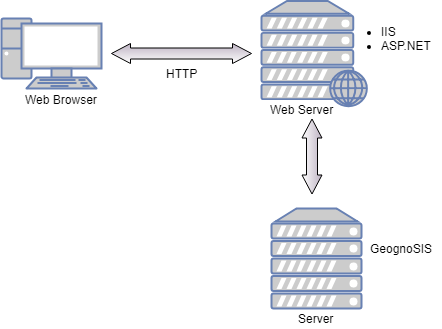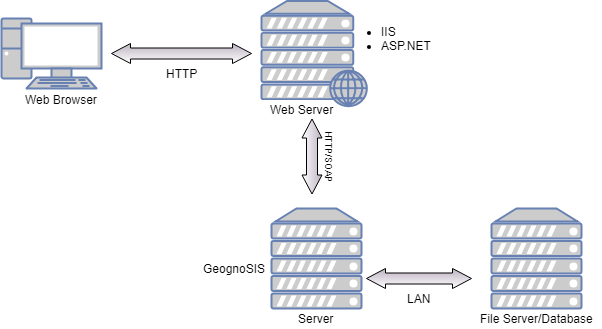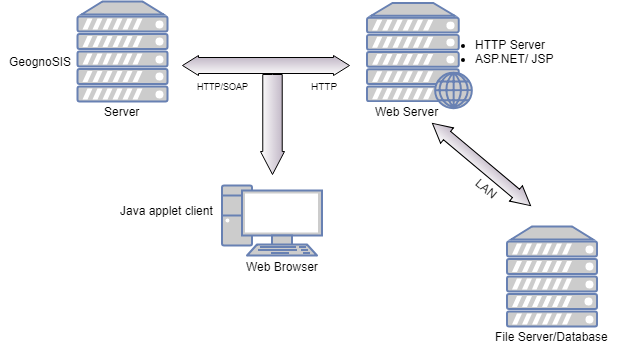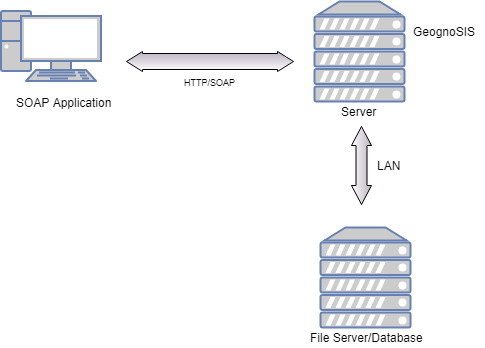Examples of GeognoSIS Configurations
GeognoSIS is based on a client/server model which offers flexibility when configuring network infrastructure and GeognoSIS architecture.
A number of possibilities are shown on this page. Your choice will be influenced by many factors:
- Hardware performance
- Network performance
- Need to isolate parts of the application
- Need to share data or services with other application
- Nature of likely client machines.
This set-up shows a single web server running IIS, ASP.NET, and GeognoSIS.

The results can be viewed in a web browser. Although GeognoSIS is installed on the same machine, it will run independently of IIS and ASP.NET.
Advantages:
- Very simple
- Minimal performance losses due to network traffic
Disadvantages:
- Extremely restrictive for CPU performance because GeognoSIS competes for resources with IIS and ASP.NET
In this setup, a web server running IIS and ASP.NET is linked to a separate server running GeognoSIS.

The results can be viewed in a web browser as for Example 1.
Advantages:
- GeognoSIS has its own dedicated resources
Disadvantages:
- Data needs to travel through two network connections rather than one
This example shows a web server running IIS and ASP.NET, serving a web browser. The web server is connected to GeognoSIS through HTTP/SOAP, which loads data from a separate data server.

Advantages:
- GeognoSIS no longer has to compete for resources with the database (as data is sourced from a database like Oracle or SQL Server)
Disadvantages:
- Data needs to travel through three network connections rather than one.
This set-up is the same as Example 3. In this case however, the web server is running Apache and Java Server Pages. The web server is not limited to IIS and Apache if the web serving application supports SOAP.

Advantages:
- GeognoSIS is not tied to Microsoft web servers.
No need to migrate existing web sites written in languages other than ASP.NET
Disadvantages:
- Data needs to travel through three network connections rather than one.
This setup shows GeognoSIS (running on a separate server) being used and accessed by a client through two connections.
The first is established going via a web server to download a client application. The second is created by the downloaded application and communicates directly with GeognoSIS via HTTP/SOAP.

Advantages:
- Communicating directly between client and GeognoSIS avoids wasting resources on the web server and minimises network usage.
- Users have a smoother and friendlier interface than a typical ASP website.
- Complex operations such as digitising polygons are possible.
Disadvantages:
- Challenging to write code.
- the choice of client machine and browser is restricted to those which can run the downloaded application.
GeognoSIS running on a server can be accessed directly by an application that supports SOAP.

Advantages:
- Not confined by browser limitations.
Disadvantages:
- Application has to be distributed and installed beforehand.
- Coding is difficult as you have to handle SOAP communication yourself.